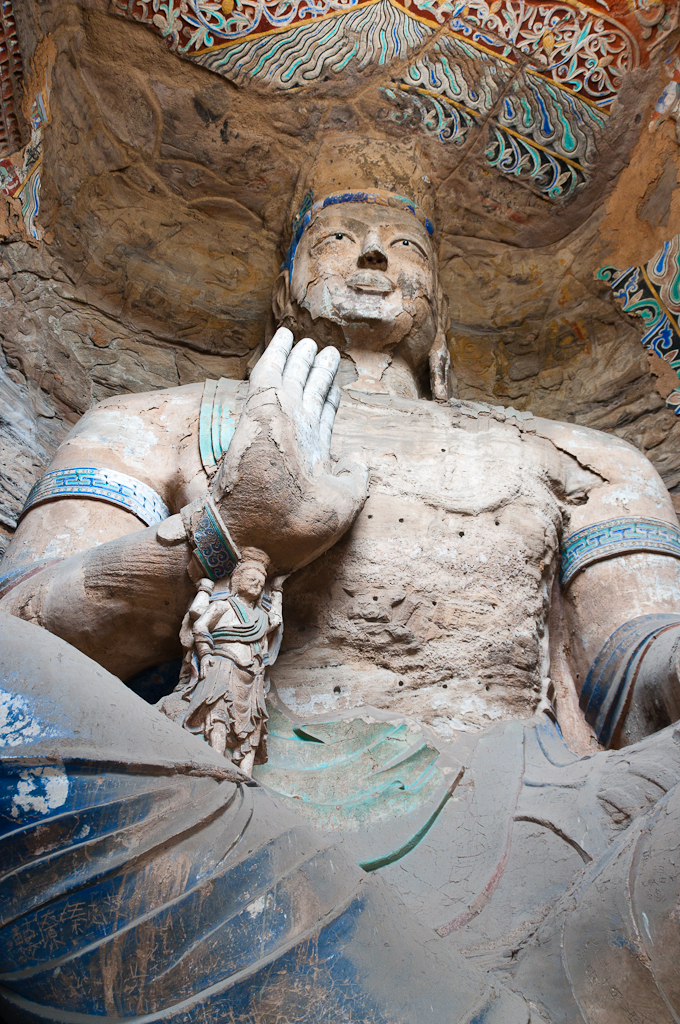Yungang Grottoes
The Yungang Grottoes (simplified Chinese: 云冈石窟; traditional Chinese: 雲崗石窟; pinyin: Yúngāng Shíkū) are ancient Buddhist temple grottoes near the city of Datong in the Chinese province of Shanxi. They are excellent examples of rock-cut architecture and one of the three most famous ancient sculptural sites of China. The others are Longmen and Mogao.
The site is located about 16 km south-west of the city, in the valley of the Shi Li river at the base of the Wuzhou Shan mountains. The grottoes were mainly constructed in the period between 460-525 AD during the Northern Wei dynasty. They are an outstanding example of the Chinese stone carvings from the 5th and 6th centuries. All together the site is composed of 252 grottoes with more than 51,000 Buddha statues and statuettes. In 2001, the Yungang Grottoes were made a UNESCO World Heritage Site The Yungang Grottoes is considered by UNESCO a “masterpiece of early Chinese Buddhist cave art… [and] …represent the successful fusion of Buddhist religious symbolic art from south and central Asia with Chinese cultural traditions, starting in the 5th century CE under Imperial auspices.”
http://en.wikipedia.org/wiki/Yungang_Grottoes
